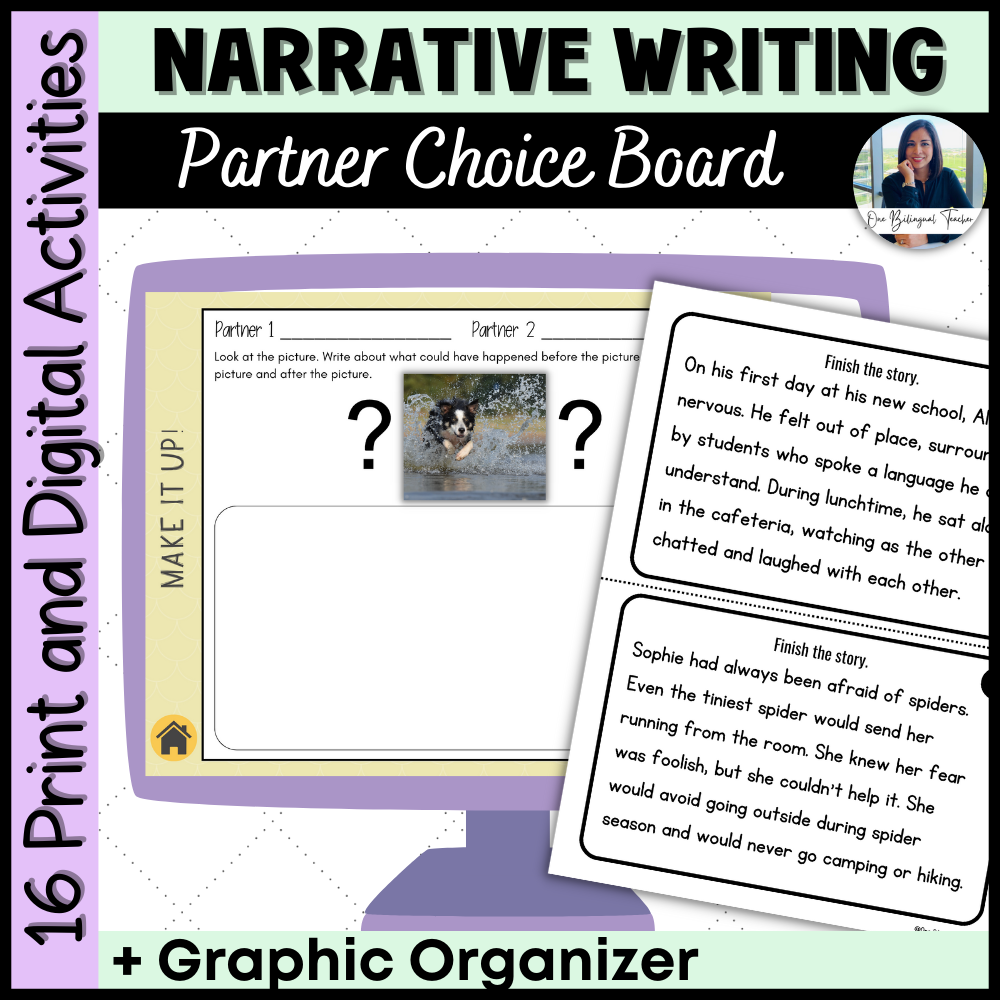10 ESL Activities to Teach Chronological Organization in Narrative Writing
Teaching our ESL students to organize their ideas in chronological order effectively can be a challenge, especially when students want to include unnecessary or irrelevant details. Fortunately, many ESL students come from families where storytelling is a common practice. This means that if we can get our students to master organization skills in writing, they’ll be able to create captivating stories with a logical flow of events that engage readers from start to finish. Through the use of effective strategies, your students will for sure bring their experiences to life. Here, you’ll find 10 ESL strategies for teaching chronological organization in narrative writing.
10 ESL Strategies for Teaching Chronological Organization in Narrative Writing
Story Sequencing Cards: Provide students with sets of picture cards representing different events and have them arrange the cards in the correct chronological order to create a story. You can also have students draw the events in their own stories before they write. This will encourage them to focus on only the important events and eliminate unnecessary details.
Story Retelling: Ask students to retell a familiar story orally or in writing, focusing on organizing events in the correct order of occurrence. You can work this in while you read a novel to the class. Not only will it work on comprehension, but it will also work with chronology.
Peer Editing: Encourage students to exchange their written narratives with peers for feedback, specifically evaluating the chronological order of events and suggesting any necessary revisions. Students tend to get more from listening to their peers than their teachers!
Time-Order Graphic Organizers: Provide students with graphic organizers specifically designed to help them structure their narratives in chronological order, such as a timeline or a flowchart.
Modeling with Mentor Texts: Share examples of well-structured narratives with clear chronological order, and guide students in analyzing how the events are organized and connected.
Time Connectives and Adverbs: Expand students' vocabulary by teaching them time-related connectives and adverbs, such as "later," "soon after," "while," and "previously," which can help indicate the passage of time and maintain chronological order.
Story Mapping: Ask students to create story maps that outline the main events of their narratives, emphasizing the order in which these events occur and their connection to the overall storyline.
Plot Diagrams: Teach students how to create plot diagrams, including the exposition, rising action, climax, falling action, and resolution. This visual representation can help them structure their narratives chronologically.
Transition Words and Phrases: Teach students a range of transition words and phrases that signal chronological order, such as "first," "next," "then," "afterward," and "finally." Encourage their use to connect events and improve the overall flow of their narratives.
Writing Conferences: This is by far the best strategy you can use. In a world of information, nothing beats one-on-one, face-to-face instruction. Conduct one-on-one writing conferences with students to review their narrative drafts, focusing on the organization of events and providing individualized guidance.
In a Nutshell
By implementing these 10 strategies into your teaching, you can guide your students toward writing engaging and well-structured narratives by helping them effectively organize their ideas in chronological order. This skill will enable them to create engaging and coherent stories that captivate their readers from beginning to end.


